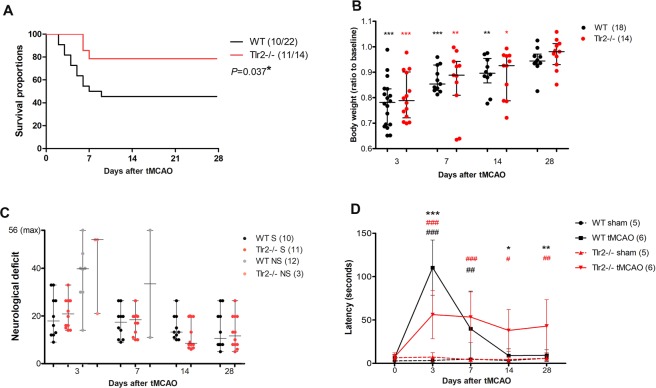Figure 1.
(A) Tlr2−/− mice survival after ischemic lesion is better than of their wild type (WT) counterparts analyzed by Log-rank (Mantel-Cox) test P = 0.037*; (B) Both, Tlr2−/− and WT lose body weight after ischemic lesion, and subsequently regain it after 28 days; (C) Mice that reached humane endpoint (grey and pale red) (non-survivors, NS) had worse neurological scores than their survivor counterparts. There was no significant difference between wild type (WT), and Tlr2−/− mice. (D) Bilateral tactile stimulation test revealed decreased latency in sticky tape removal from the contralateral forepaw in acute time points in Tlr2−/− mice compared to their wild type (WT) counterparts, but increased time of reaction in the later time points of 14 and 28 days. ***,** and *marking P < 0.001, P < 0.01, P < 0.05 for differences between WT controls and Tlr2−/− controls, respectively. #Are used to mark differences within the same genotype compared to their sham operated controls (WT controls vs. WT tMCAO, Tlr2−/− controls vs. Tlr2−/− tMCAO).

